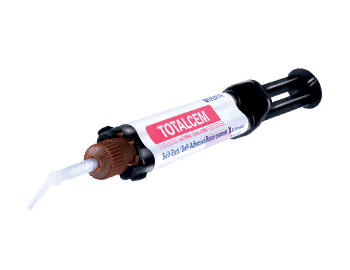Description
For cementation of:
- crowns bridges posts
- inlays & onlays
- Self-adhesive on: enamel, dentine, metal
- ceramic, porcelain, zirconium composites
“Finally, a self-etching/self-bonding cement where you can almost feel the low film thickness and that your restorations are seating completely! For my own practice, it is a time and money saver with equal or better results to any cement in its class.”- Dr. Louis Malcmacher, President, American Academy of Facial Esthetics
Advantages
All in one! Etching + Primer + Bonding + Cement
Exceptional bonding strength: on enamel: 20MPa on dentine: 15MPa
Dual curing (Light- or self-curing) : Guaranteed curing in areas with limited light penetration
Optimized gel state for an easy removal of excess: simply cure for 3-4s
3 types of intra-oral tips: (fine, extra-fine and ultra-fine Colibri)
No post-operative sensitivity
Extremely thin film (10 μm)
Not soluble in the oral fluids
Perfect seal
Radiopaque 250% of Al
Fluoride release
Can be used on vital teeth
2 shades available: Universal A2 & Translucent
Long term shade stability
Can be kept at room temperature: no need to refrigerate!
- Hints and Tips
- Before applying TotalCem, the dentine must be dry, but not too dry
- For inlays and onlays, etching the enamel edges with phosphoric acid is recommended, in order to increase the bonding strength (while taking care of not spreading over onto the dentine)
- How to clean the root canal before applying TotalCem, in order to have an optimum cementation: Remove all residues of gutta percha with a calibrated drill. Pass over it with an ultrasonic probe. Rinse well and dry without over-drying. Apply TotalCem with an extra-fine intra-oral tip
- TotalCem has not been developed to adhere to enamel with no mechanical support (eg. dental brackets, veneers)
- During the setting of a ceramic inlay or a zircon crown, the following procedure can be followed to improve cementation: Apply hydrofluoric acid for 1 to 3 minutes, rinse thoroughly, dry, then apply silane (DentoBond Porcelain Fix)
